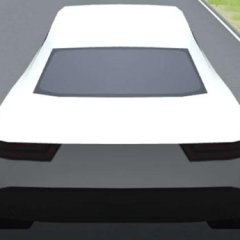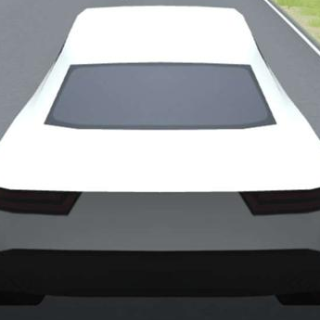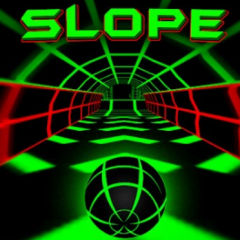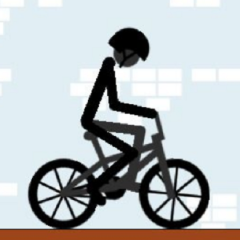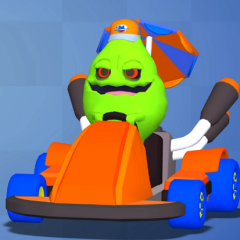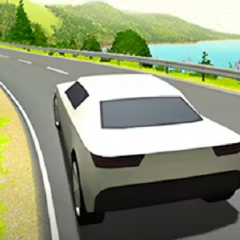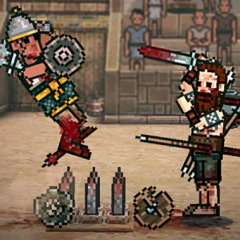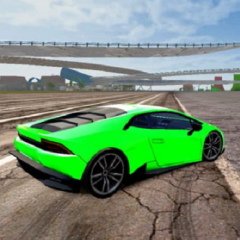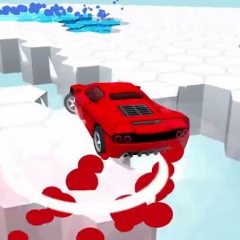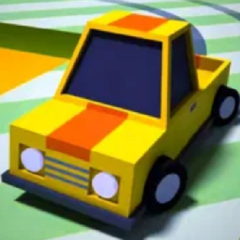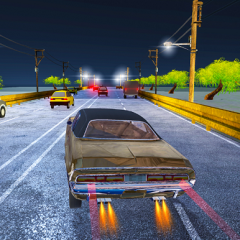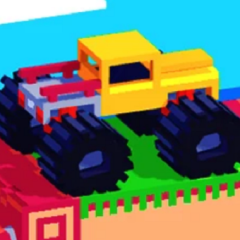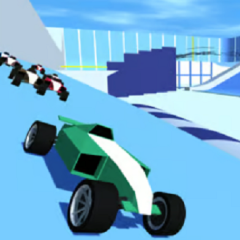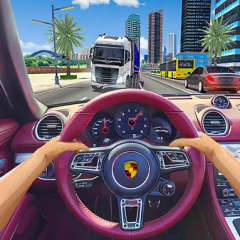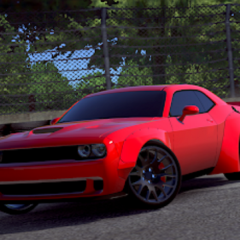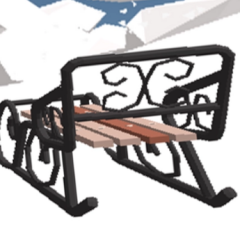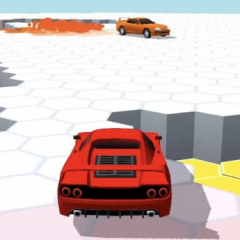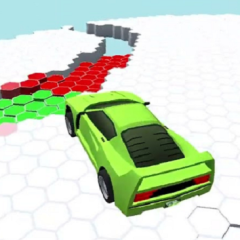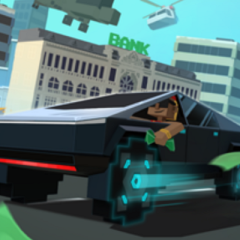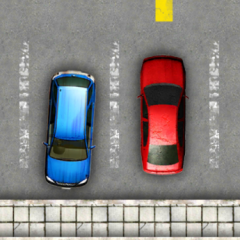Slow Roads Unblocked is a browser-based driving game that offers an open-ended driving experience with no races, no score, and no time pressure. The game focuses entirely on forward motion through a looping, procedurally generated road that moves across natural-looking terrain like hills, plains, and cliffs. As the player drives, the environment changes gradually—day becomes night, clouds move overhead, and terrain types shift without any loading screens or interruptions. The game does not challenge the player with levels or objectives. Instead, it provides an uninterrupted space for motion that is defined only by how long the player wants to continue driving.
The simplicity of the gameplay is a major part of its appeal. You control a vehicle using basic keyboard inputs—steer left and right, accelerate or decelerate, and toggle between manual and automatic driving modes. There are no other cars on the road, no competing drivers, and no finish lines. The experience is shaped by how players customize their settings before starting. These settings include the type of car, the environment’s weather and lighting conditions, and even the general terrain layout. Every new run can look and feel different based on these choices.
Customization and Environmental Controls
One of the defining elements of Slow Roads Unblocked is how players can configure their driving experience before and during a session. Players can choose between several vehicles, including a lightweight coupe, a long coach bus, or a futuristic one-wheel machine. Each vehicle handles slightly differently and affects the feel of the drive. You can also customize the road’s conditions by adjusting the season, the time of day, and the terrain difficulty. These changes affect both visuals and road layout—sharper hills, steeper curves, or longer stretches of flat ground can be added depending on the settings.
Playability, Accessibility, and Technical Performance
Slow Roads Unblocked runs directly in a web browser without installation, making it easy to access even in environments with restricted access like schools, libraries, or workplaces. Because the game uses a lightweight engine built with JavaScript and the Three.js rendering library, it loads quickly and runs on most modern devices without needing high-end hardware. Whether you’re on a desktop, laptop, or even a mobile device with a large enough screen, the game provides a consistent visual and control experience. The only requirement is a browser that supports WebGL.
The unblocked version of the game is functionally identical to the standard one. There are no features removed or locked behind accounts. You still get access to all car types, all environmental settings, and the same smooth, procedural generation of terrain. The controls work directly through the keyboard, with additional toggles like cruise mode and camera switches available through on-screen buttons or keys. Players can even leave the car in autopilot mode and simply watch the environment pass by in real time, making it suitable as a passive screen experience as well.
Key Features of Slow Roads Unblocked:
- Procedurally generated, infinite road with no loading screens
- Vehicle selection includes car, bus, and futuristic models
- Adjustable weather, lighting, and terrain difficulty
- Real-time day/night transitions and weather changes
- Supports both manual driving and autopilot modes
- Fully playable in-browser with no downloads required
- Optimized for unblocked access in restricted networks
- Low system requirements for wide device compatibility
- Visuals created using lightweight 3D rendering (Three.js)
- Single-player, exploration-based design with no time limits
Designed for Long Sessions or Quick Breaks
Slow Roads Unblocked doesn’t push the player toward any particular goal, allowing full control over the pace and duration of play. You can use it as a quick break between tasks or run it in the background with autopilot for ambient movement. Its replay value comes not from variety in objectives but from how each player configures their drive. Because the game responds to different input styles, it adapts well to how the player wants to interact—actively steering through winding roads or just letting the camera roll through changing landscapes.

